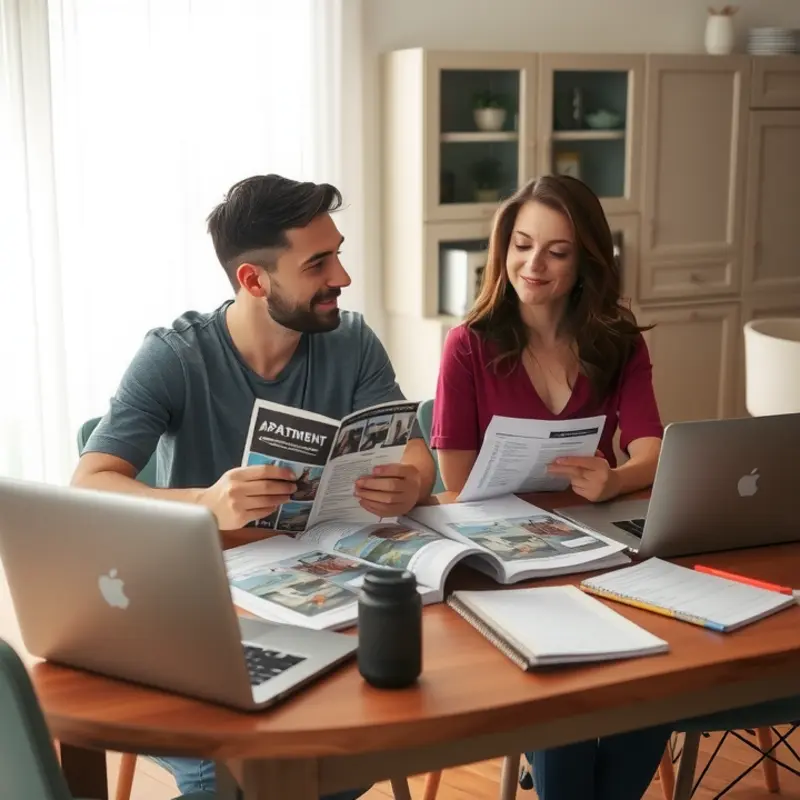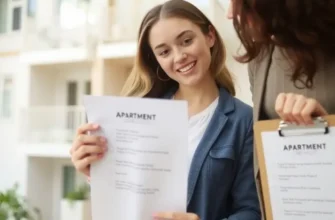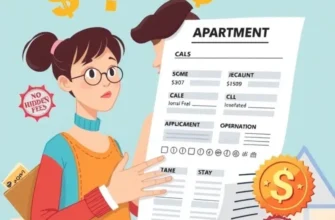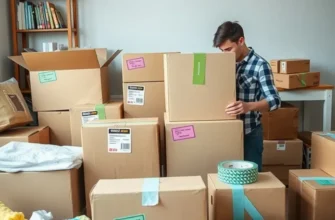Finding the right apartment can feel a bit like dating; you have to sift through a lot of potential matches before you find ‘the one.’ As young adults embarking on the exciting journey of renting for the first time, it’s crucial to have a strategy in place. Whether you’re a young professional looking for a cozy den, a couple dreaming of a chic city space, or even a family needing a bit more room to spread out, having a handy checklist will make all the difference. Picture this: you show up to a viewing all excited, only to find out the kitchen is smaller than your shoe closet, or the neighbor’s idea of a good time is a marching band at 3 AM. With our guide, you’ll be well-prepared to spot the stars and red flags during your apartment hunt, ensuring that your next home truly feels like home.
Setting the Scene: Pre-Viewing Musts

Before setting foot in a prospective apartment, it’s crucial to do some pre-viewing groundwork. This preparation will allow you to make informed decisions and streamline the viewing process. Start by establishing your budget. Factor in not only the monthly rent, but also utilities, moving costs, and any potential fees for amenities. To help with estimating how much you can comfortably afford, check out the rent affordability calculator.
Creating a list of must-haves is another essential step. Consider aspects such as location, transport links, and nearby amenities. If you own a pet or plan to in the future, prioritize features like pet-friendly policies or a nearby park. Focus on practical elements like the number of bedrooms, kitchen size, and any facilities for in-unit laundry.
Researching neighborhoods is another critical aspect of preparation. Look into factors like crime rates, access to public transport, and proximity to your workplace. Community forums and city guides can provide valuable insights into the lifestyle of an area.
An often overlooked yet vital pre-viewing step is planning the logistics of your future living space. Bring a measuring tape to ensure your furniture will fit and to check storage spaces. Being certain that your sofa or favorite armchair can navigate stairwells and doorways is essential, saving hassle and disappointment later.
Write down a set of questions to ask the landlord during your viewing. These can include inquiries about lease termination conditions, maintenance responsibilities, or policies about making alterations to the space. Prepare to discuss these topics to avoid hidden surprises once you’ve committed to a lease.
Being prepared also includes organizing the necessary paperwork, such as pay stubs or reference letters, should you decide to make an on-the-spot decision. Having these documents ready demonstrates seriousness and can expedite the application process.
Lastly, if you require a co-signer because of limited credit history or income requirements, make sure to have that conversation beforehand. This will ensure you’re ready when you find your perfect pad, without risking delays due to paperwork or unresolved financial queries. By taking these steps, you transform apartment viewing from a daunting task into an exciting opportunity to find your ideal living space.
On the Ground: What to Look For During a Visit

As you step into your potential new home, your goal is to assess not just the cosmetic appeal but also the underlying quality and livability of the space. Start by evaluating the layout. Even if the decor isn’t to your taste, envision how your furniture and personal style could transform the space. Is the flow of rooms logical? Are there distinct areas for relaxation, dining, and work?
Next, inspect the windows and natural light. A well-lit apartment can save on electricity costs and uplift your mood. Check that windows open smoothly; fresh air circulation is key for a healthy living environment.
Pay attention to noise levels. Take a minute to stand quietly and listen. Can you hear street noise, thin walls, or the persistent hum of nearby trains? This could make a huge difference in comfort.
Delve into practicalities by checking the plumbing and water pressure. Turn on faucets and shower heads; note if the water flows consistently and check for any leaks. While you’re at it, peek under the sink for signs of dampness or mold, which could indicate deeper plumbing issues learn more about maintenance.
Inspect the heating and cooling systems. Ask about the age of the HVAC system and how frequently it’s serviced. Test thermostats to ensure they work and evaluate the window and door seals for drafts, especially if your area experiences extreme weather.
The state of the appliances is crucial. Test the stove, oven, and fridge. They should be in good working order, not just visually clean. Open the dishwasher and washer/dryer if there are any. Age alone isn’t necessarily bad, but check for signs of wear.
One often-overlooked detail: odors. As you tour, sniff for any strange smells. The odor could stem from recent paint, which may fade, or worse, be indicative of pest infestation or sewage problems. Trust your nose!
Assess the condition of the floors and ceilings. Look for any warping, stains, or cracks that might suggest underlying structural issues. Inquire about recent repairs and their causes.
Before wrapping up, review building amenities and visit communal areas. A gym or laundry room can be great perks, but make sure they’re well-maintained. Note if security measures like CCTV or a doorman are in place, adding peace of mind.
Finally, take a stroll around the neighborhood. Time your visit to various times of the day to understand traffic and nightlife. Gauge the distance to essential services like grocery stores, public transport, and parks.
This in-depth vetting of your potential new home ensures that your apartment isn’t just a roof over your head, but a place of comfort and joy. Complete this checklist, and you’ll be one step closer to finding your perfect pad.
Final words
To wrap things up, finding the perfect apartment might feel overwhelming at times, but with the right checklist in hand, you’re setting yourself up for success. Armed with vital questions, a keen eye for detail, and a sense of humor (because let’s face it, sometimes you need to laugh about how some places just don’t make sense), you’ll be ready to filter through the noise. Remember, it’s not just about finding a space; it’s about finding a place where you can create memories and live comfortably. So, grab that checklist and get out there! Your future home is waiting.









